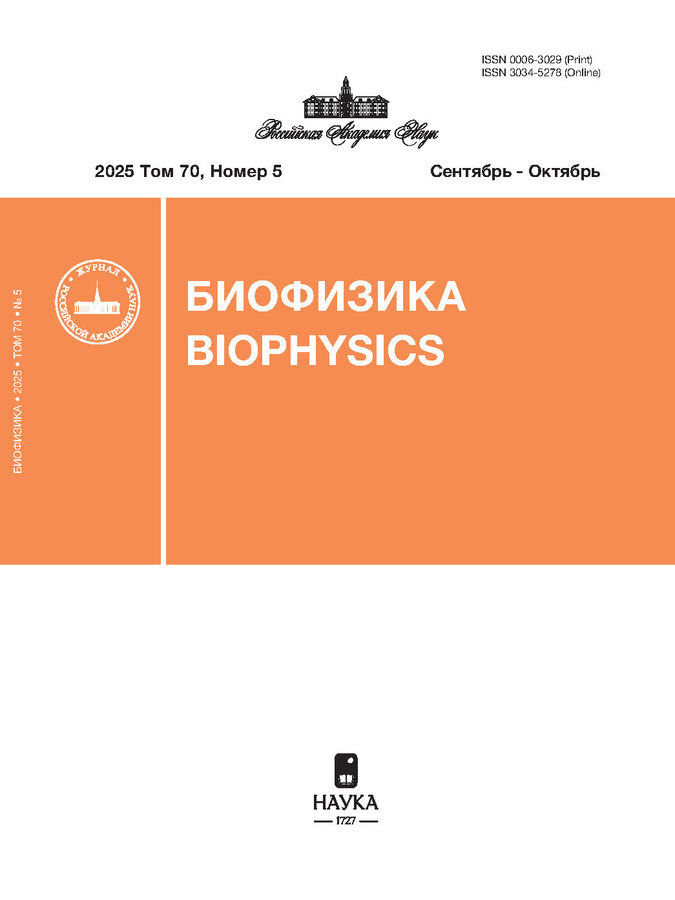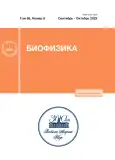High- dose nitric oxide gas inhalation for HIV infection
- Authors: Pekshev A.V1, Vagapov A.B1, Sharapov N.A1, Vanin A.F2
-
Affiliations:
- N.E. Bauman Moscow State Technical University
- N.N. Semenov Federal Research Center for Chemical Physics, Russian Academy of Sciences
- Issue: Vol 68, No 5 (2023)
- Pages: 1074-1080
- Section: Articles
- URL: https://journals.rcsi.science/0006-3029/article/view/233485
- DOI: https://doi.org/10.31857/S0006302923050289
- EDN: https://elibrary.ru/NBAREQ
- ID: 233485
Cite item
Full Text
Abstract
About the authors
A. V Pekshev
N.E. Bauman Moscow State Technical UniversityMoscow, Russia
A. B Vagapov
N.E. Bauman Moscow State Technical UniversityMoscow, Russia
N. A Sharapov
N.E. Bauman Moscow State Technical UniversityMoscow, Russia
A. F Vanin
N.N. Semenov Federal Research Center for Chemical Physics, Russian Academy of Sciences
Email: vanin.dnic@gmail.com
Moscow, Russia
References
- М. Р. Бобкова, ВИЧ-инфекция и иммуносупрессии, 12 (1), 22 (2020).
- S. Kramer-Hammerle, I. Rothenaigner, H. Wolff, et al., Virus Res., 111, 194 (2005).
- T.-W. Chun, D. C. Nickle, J. S. Justement, et al., J. Infect. Dis., 197 (5), 714 (2008).
- S. Castro-Gonzalez, M. Colomer-Lluch, and R. Serra-Moreno, AIDS Res. Human Retroviruses, 34 (9), 739 (2018).
- C. S. Reiss and T. Komatsu, J. Virol., 72 (6), 4547 (1998).
- M. R. Garren, M. Ashcraft, Y. Qian, et al., Appl. Mater. Today, 22, 100887 (2021).
- F. Lisi, A. N. Zelikin, and R. Chandrawati, Adv. Sci., 8 (7), 2003895 (2021).
- F. Sodano, E. Gazzano, R. Fruttero, et al., Molecules, 27, 2337 (2022).
- T. Persichini, M. Colasanti, M. Fraziano, et al., Biochem. Biophys. Res.Commun., 254, 200 (1999).
- J. B. Mannick, J. S. Stamler, E. Teng, et al., J. Acquir. Immune Defic. Syndr., 22 (1), 1 (1999).
- T. Persichini, P. Ascenzi, V. Colizzi, et al., Int. J. Mol. Med., 4, 365 (1999).
- J. L. Jimenez, J. Gonzalez-Nicolas, S. Alvarez, et al., J. Virol., 75 (10), 4655 (2001).
- D. Torre, A. Pugliese, and F. Speranza, Lancet Infect. Dis., 2, 273 (2002).
- Е. В. Печёнкин, А. В. Коврижкин, А. В. Пекшев и др., Биофизика, 67 (6), 1251 (2022).
- А. Ф. Ванин, А. В. Пекшев, А. Б. Вагапов и др., Биофизика, 66 (1), 183 (2021).
- А. Ф. Ванин, А. В. Пекшев, Е. В. Печёнкин и др., Биофизика, 68 (1), 142 (2023).
- J. Z. Li, B. Etemad, H. Ahmed, et al., AIDS, 30 (3), 343 (2016).
- S. Khan, M. Kayahara, U. Joashi, et al., J. Cell Sci., 110, 2315 (1997).
- А. Ф. Ванин, А. А. Абрамов, А. Б. Вагапов и др., Биофизика, 68 (6) (2023) (в печати).
- А. В. Шиповалов, А. Ф. Ванин, О. В. Пьянков и др., Биофизика, 67 (5), 969 (2022).
- A. F. Vanin, V. A. Tronov, and R. R. Borodulin, Cell Biochem. Biophys., 79, 93 (2021).
- A. L. Kleschyov, S. Strand, S. Schmitt, et al., Free Rad. Biol. Med., 40, 1340 (2006).
Supplementary files










